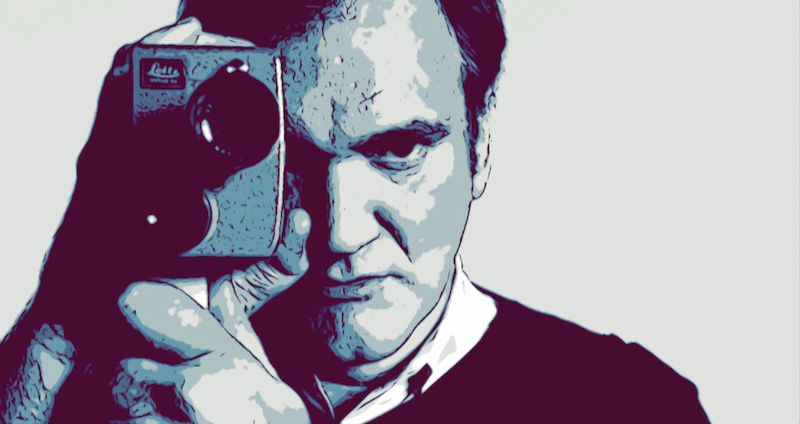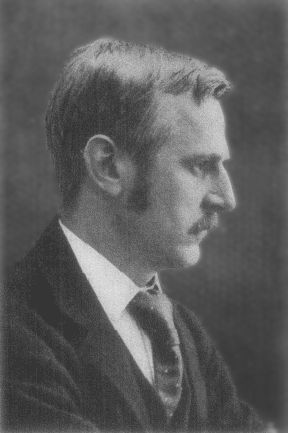4 Stages of Creativity
Creativity happens in stages but many people see it as an event.

Quentin Tarantino
In an interview with Joe Rogan, Quentin Tarantino, who has written and directed films like Pulp Fiction, Inglorious Basterds, and Django Unchained, was asked to explain his writing process.
Tarantino explains that his method includes writing for about 6-8 hours during the day, and then he spends the remainder of his evenings relaxing in his pool thinking about what he had just written.
And it's during this downtime when a lot of new ideas come to him to use for the next day's writing session. He highlights that he developed this process mid-career, and the meditative aspect has made the whole process more enjoyable.
It's not a flash of genius or an all-night grind, it's a deliberate and methodical approach to creativity.
Watch the video to hear him explain.
Oliver Sacks
Oliver Sacks was a British Neurologist, professor of psychiatry, and bestselling author whose books include Awakenings, The Man Who Mistook His Wife for a Hat, Musicophilia, and Hallucinations. In Daily Rituals: How Artists Work, Sacks describes his creative process to the authors.
"I may sketch out thoughts on my typewriter, but I generally prefer pen and paper, a Waterman fountain pen and long yellow paper. I often write at a standing desk, sometimes perched on a stool, to spare my bad back from too much sitting. I take a brief lunch break, walk around the block, practice piano for a few minutes, and then have my favorite noon meal of herrings and black bread.
The afternoon is spent writing, if I am up to it. I sometimes fall asleep, or into a deep reverie, lying on my couch, and this may put my brain in an ""idling"" or ""default"" mode. I let it play with images and thoughts on its own; I come to from these altered states, if I am lucky, with energy renewed and confused thoughts clarified. I have an early dinner, usually tabouli and sardines (or if I have company, sushi), and play music (usually Bach) on the piano or a CD.
Then I settle down to ""pleasure"" reading—biographies, histories, letters, occasionally novels. I hate television, and rarely watch it. I go to bed early, and usually have vivid dreams, which may haunt me until I reconstruct and (if possible) deconstruct them. I keep a notebook by my bed for memories of dreams, or night thoughts—many unexpected thoughts seem to come in the middle of the night. On the (rare) occasions when I get into a really creative mode, my daily structure is completely ignored, and I write non-stop, sometimes for 36 hours at a time, until the burst of inspiration has completed itself."
The book contains numerous other routines of creative people in areas such as science, art, film, literature, and many more.
The Art of Thought
Creativity is often seen as a burst of ideas that come to certain people, but this only highlights one aspect; in reality, it's more of a process than an event.

Graham Wallas was a social psychologist and co-founder of the London School of Economics. Toward the end of his career, he started studying the process of creativity.
In 1926 he published The Art of Thought, which would outline the four stages of the creative process, based on his observations and the accounts of famous and accomplished creative individuals.
This work has since been cited numerous times and is considered by many to be a foundation for how creative work is done.
Wallas 4 Stage Model
Preparation
"The educated man has, again, learnt, and can, in the Preparation stage, voluntarily or habitually follow out, rules as to the order in which he shall direct his attention to successive elements." - Graham Walls
Research is necessary because, well, you don't know what you don't know. In the book Where Good Ideas Come From: The Natural History of Innovation, author Steven Johnson writes that innovation tends to happen in the "adjacent possible," to notice probable solutions, you have to work to see what is already there.
This is the stage where you research and gather information, focusing on the problem you are solving. By focusing on a specific problem, you open your mind to hunting and recognizing possible solutions that are all around you.
Incubation
"Voluntary abstention from conscious thought on any problem may, itself, take two forms: the period of abstention may be spent either in conscious mental work on other problems, or in a relaxation from all conscious mental work. The first kind of Incubation economizes time, and is therefore often the better." - Graham Wallas
Writing and walking took up much of the day for philosopher Soren Kierkegaard. He believed walking is where he received his best ideas, and he would have to run home to write them down.
To aid his creativity, legendary composer and pianist Ludwig van Beethoven would take long, vigorous walks daily, which would occupy much of his afternoon.
This is where no conscious work is done. Instead, it allows you to step back from the problem and let your subconscious work for you, even while doing something else. Many creative people look for routines where they can clear their minds and relax.
Illumination
"If we so define the Illumination stage as to restrict it to this instantaneous “flash,” it is obvious that we cannot influence it by a direct effort of will; because we can only bring our will to bear upon psychological events which last for an appreciable time. On the other hand, the final “flash,” or “click” … is the culmination of a successful train of association, which may have lasted for an appreciable time, and which has probably been preceded by a series of tentative and unsuccessful trains. The series of unsuccessful trains of association may last for periods varying from a few seconds to several hours." - Graham Wallas
According to Darwin, the theory of natural selection just popped into his head while he was working on other ideas. But Darwin's notebooks show that he already defined an almost complete theory of natural selection long before his "flash" of insight.
This stage is the lightbulb moment when ideas enter into consciousness, and the moment most people tend to focus on when thinking about creativity. It can happen while doing something completely random and non-associated with your creative task, like taking a shower or working on another project.
Verification
"It never happens that unconscious work supplies ready-made the result of a lengthy calculation in which we only have to apply fixed rules… All that we can hope from these inspirations, which are the fruit of unconscious work, is to obtain points of departure for such calculations.
As for the calculations themselves, they must be made in the second period of conscious work which follows the inspiration, and in which the results of the inspiration are verified and the consequences deduced. … They demand discipline, attention, will, and consequently, conscious work." - Graham Wallas
In the book Little Bets by Peter Sims, the author writes about how Chris Rock develops his comedy routines. First, he visits small comedy clubs to try out unpolished, untested material. Then, whether they succeed or fall flat, the feedback becomes guideposts that give him creative direction.
Once you have a moment of insight, it's time to test the idea, concept, or solution. You will receive valuable feedback on how your idea interacts with the world and where it succeeds and falls short.
Wallas writes that these stages constantly overlap as we explore different problems. For example, we may be in the preparation stage of one problem while incubating another.
Examples like Quentin Tarantino and Oliver Sacks show us; while appearing slightly different, they also have some distinct similarities. They have routines and deliberate methods for cultivating creativity.
To improve creativity, start recognizing that it is a process, happening in recognizable stages, not a single event.
Thanks for reading!
I write weekly articles breaking down scientific research, world-class performers, and successful organizations (investing, business, sports, art, and more) to discover tools, tactics, and routines that you can use for everyday life. I share what I learn on my website. You can get more actionable ideas by entering your email below.
Footnotes:
- The Art of Thought: A Pioneering 1926 Model of the Four Stages of Creativity by Maria Popova (source for Wallas quotes)
- Where Good Ideas Come From: The Natural History of Innovation by Steven Johnson
- Little Bets by Peter Sims
- Daily Rituals: How Artists Work by Mason Currey
- The Art of Thought by Graham Wallas
